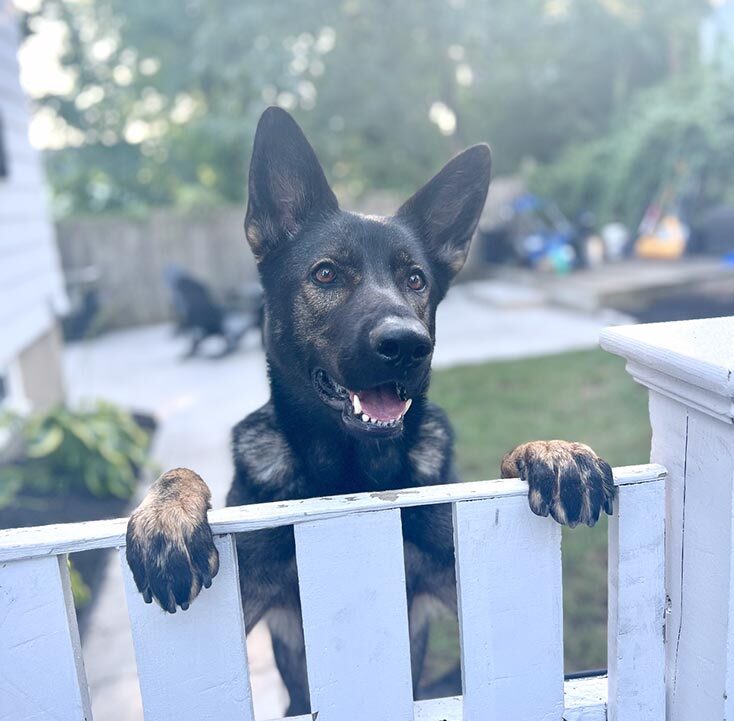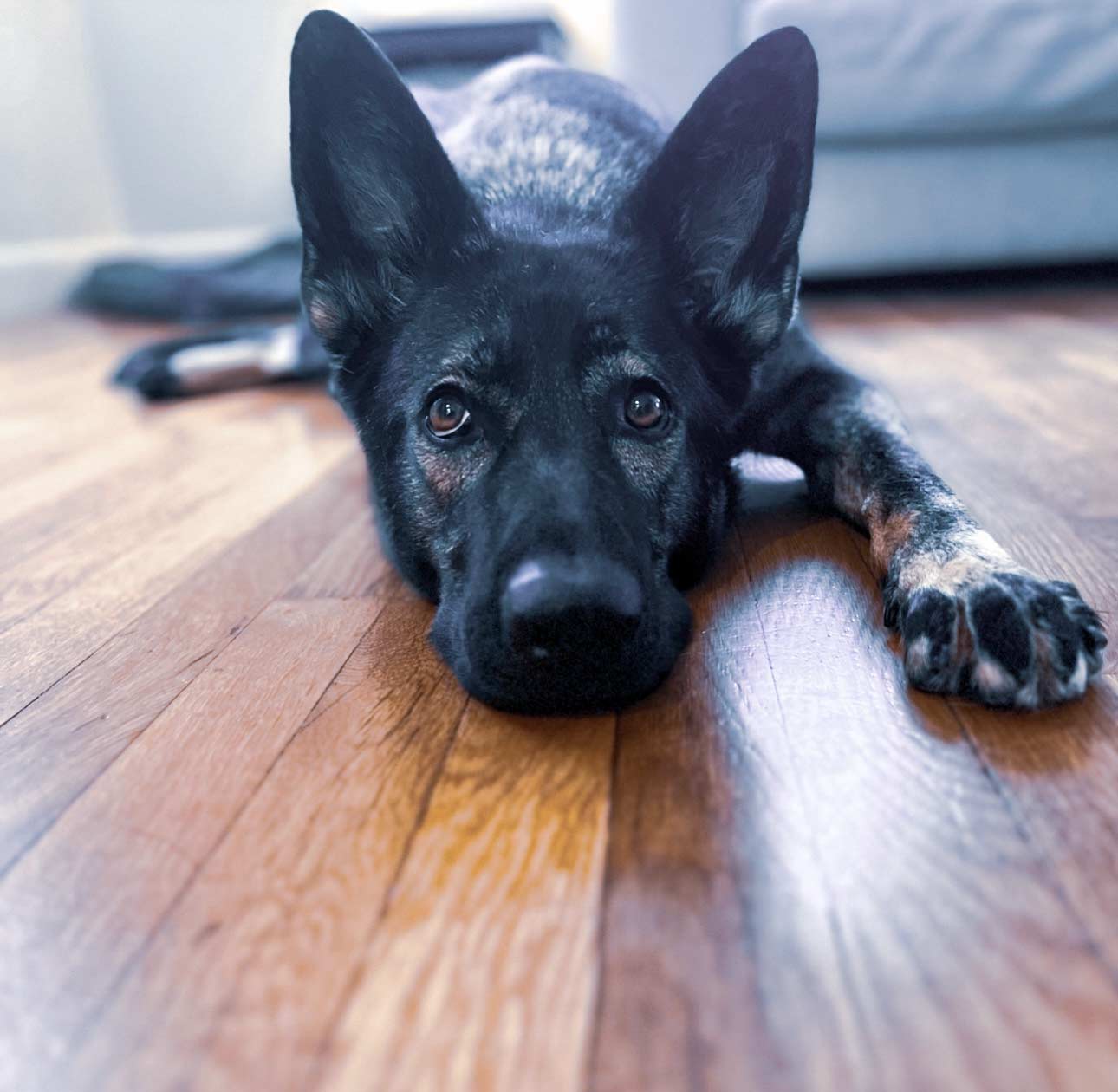As a pup parent, you’ve definitely seen your dog panting at one point or another: tongue hanging out to the side, the huffing and puffing of heavy breathing, their chest heaving up and down.
While dog panting is usually a totally normal behavior for happy and active canines, it’s essential to understand why they do it.
In this article, we break down the science of normal dog panting and what to look for so that you know if your dog is just being themselves or if there is any cause for concern.
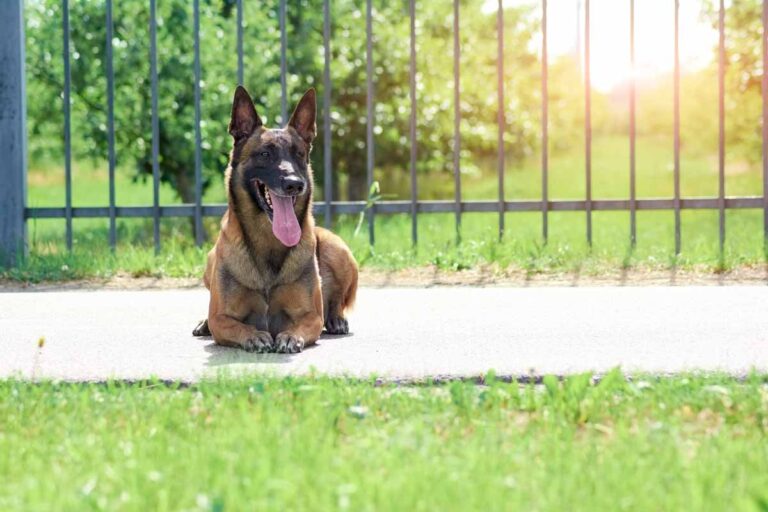
Understanding Dog Panting
Dogs have minimal sweat glands, which are primarily located in their paws. Unlike humans, dogs don’t sweat through their skin. Instead, dogs use panting to expel heat and regulate their body temperature.
Panting allows heat and water to evaporate off their tongues and let air circulate in their bodies. It also helps them to replenish their oxygen levels after physical exertion.
Common Causes of Dog Panting
As pet owners, it’s important to recognize the symptoms of normal panting in dogs.
Play and exercise
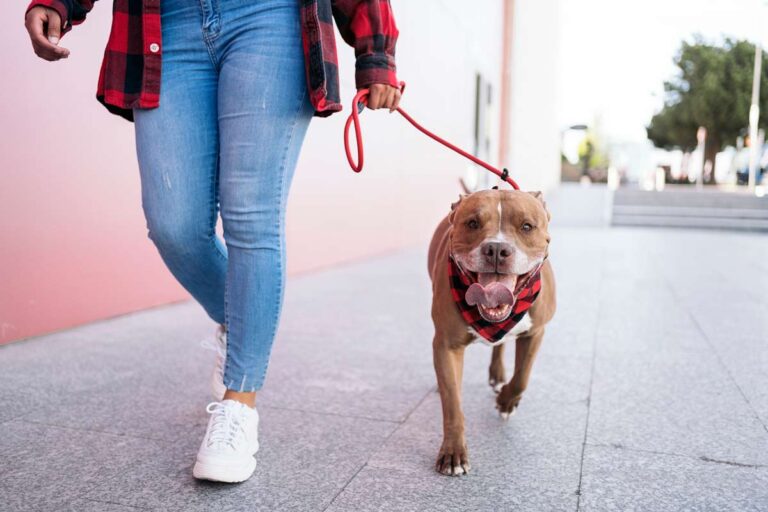
Just like humans, dogs get tired after physical exercise. You might notice that your dog will often pant after a game of fetch or a long-distance walk. This is their way of cooling down and catching their breath.
Heat And Humidity
Do you get hot walking around the park on a 97-degree day? So does your dog. Sweltering weather can make anyone feel uncomfortable, and dogs are no exception. Panting helps dogs to dispel extra body heat and stay cool.
Discover ways to exercise your dog indoors when it’s too hot to get outside!
emotional and stress responses
Dogs pant when they are excited about something, like a favorite person coming home from work. As their heart rate increases, dogs pant to help circulate oxygen and cool down.
Dogs also pant when they are stressed or anxious, like when a thunderstorm happens, and they are frightened by the loud noises. Panting during stressful situations helps regulate their breathing and calm their nerves, acting as a soothing mechanism.
So, whether your dog is wagging its tail at the dog park or nervous at the vet, dog panting is a natural response to intense emotions.
Medicine
Medications, particularly steroids like prednisone, can cause increased panting in dogs, even when they are not active or excited. You should consult your vet if your dog’s panting becomes excessive while on medication.
Pain Or Discomfort
Sometimes, dog panting can be a sign that your dog is in distress. Pain, nausea, a recent cut, or discomfort can cause a dog to pant more than usual.
If you think your dog is panting due to pain, make an appointment with your vet so they can examine your dog ASAP.
Excessive Dog Panting: When To Be Concerned
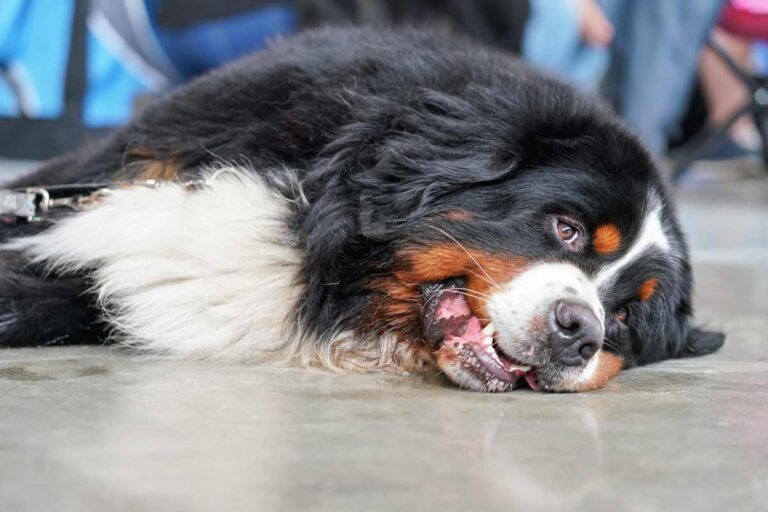
While dog panting is usually a normal and healthy behavior, excessive panting, especially if it’s out of context, can be a sign of an underlying health condition.
Heatstroke
One of the more serious reasons for dog panting is heatstroke and overheating. Signs of heatstroke include excessive panting, drooling, reddened gums, and lethargy. Dogs who are overheated may appear restless or become unresponsive while they are trying to cool themselves down.
Heatstroke can be life-threatening to dogs so call your vet immediately if your dog shows any of these symptoms.
Chronic Illness
Respiratory Issues
Underlying conditions like asthma or bronchitis can make breathing difficult for dogs, resulting in heavy dog panting.
Heart Disease
If your dog is panting heavily, it could be a sign of heart problems, which can impede a dog’s ability to circulate oxygen properly, which leads to panting. Heart problems might include abnormal heart valves, abnormal heartbeat, or congestive heart failure.
Cushing’s Disease
Cushing’s disease is a hormonal imbalance that occurs in middle-aged and older dogs where the adrenal glands produce too much cortisol. One of the earliest signs of this health issue is inappropriate and excessive panting.
Panting at Rest
If your dog is panting excessively while resting or if heavy panting occurs at inappropriate times (when it’s not warm or your dog has not been exercised), it could indicate an underlying health issue.
Other Symptoms to Watch For
While there isn’t any amount of panting that is “too much” for a dog, panting coupled with symptoms like coughing, lethargy, or loss of appetite could be cause for concern. Talk to your vet if your dog’s panting sounds raspier, harsher, or louder than usual.
Breed-Specific Dog Panting

Brachycephalic dog breeds, like Pugs and Boston Terriers, often have more breathing difficulties due to their short nasal passages. These short-nosed breeds require extra attention to their heavy panting and noisy breathing patterns.
Some breeds, particularly Labrador Retrievers and Siberian Huskies, are predisposed to a condition called laryngeal paralysis. Dogs with laryngeal paralysis cannot open their airways completely because their voicebox muscles do not function properly.
Dogs with either of these conditions are at higher risk of heatstroke. Pet owners with these breeds should pay extra attention to any signs of abnormal panting.
Preventive Measures and Care
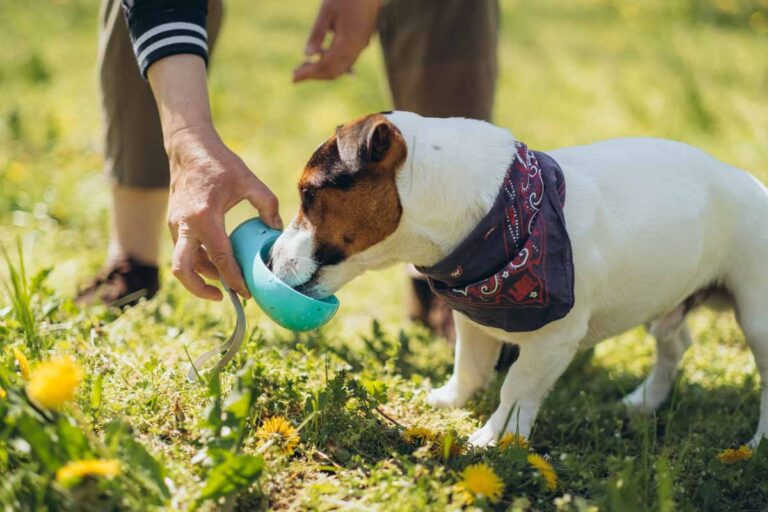
Most dogs take between 15 and 30 breaths per minute, but no specific amount of panting is considered “too much” for a dog. Dog panting depends on breed, age, lifestyle, and fitness.
The best way to decide whether your dog’s panting is cause for concern is to learn your dog’s regular respiratory rate. Make a mental note of which situations cause your dog to pant. Once you recognize your dog’s behavior and breathing patterns, it will be much easier to spot any changes and identify abnormal breathing.
Keep your dog hydrated; ensure they always have clean water access. If you are outside on hot days, take frequent breaks, rest in shady areas, and keep them cool with plenty of water.
Avoid keeping your dog outside in extreme heat for extended periods, and NEVER leave your dog in a hot car.
If you need to leave the dog in the car, leave it running with the air conditioner on or roll all the windows down. It only takes 10 minutes for a car to reach life-threatening temperatures.
Consult a Veterinarian
If you’re ever in doubt about your dog’s panting, visiting the vet is the best course of action. Whether your dog has started panting more frequently or they pant for extended periods, if you can’t find an apparent cause for the panting, call your vet. They can rule out pet health problems and provide peace of mind.
Conclusion

Panting is a perfectly normal part of a dog’s physiology. Understanding why your dog is panting and knowing when it might be a sign of something more serious will help keep your dog healthy and comfortable.
Remember, panting is often just a sign of a happy, active dog, but call your vet if you have any questions or concerns with your dog’s panting or breathing.


